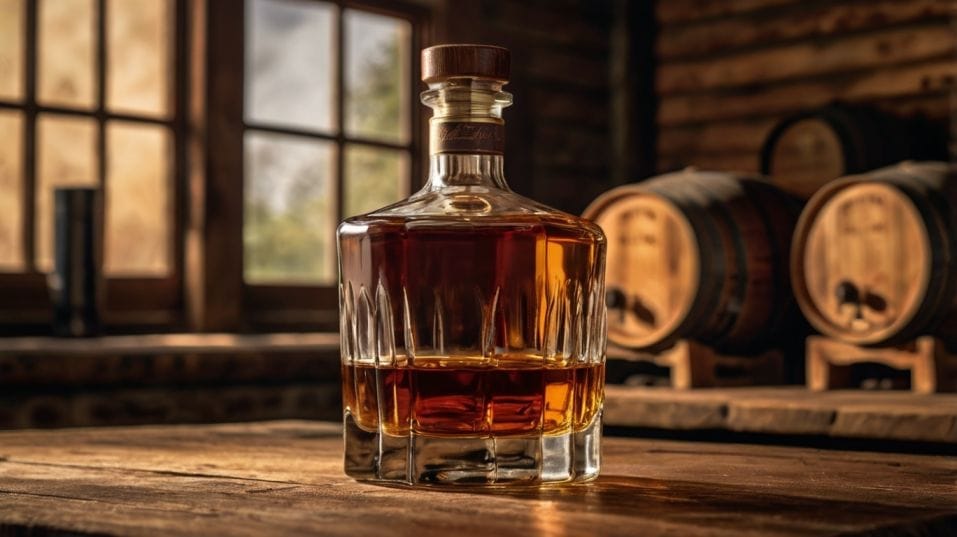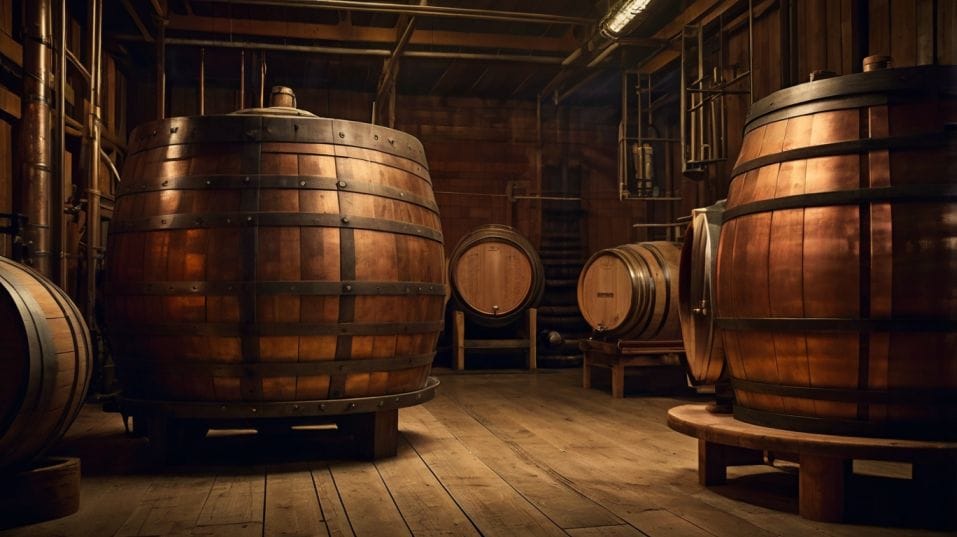Cask Strength Explained: Aging Without Water
Curious about bold, undiluted whiskey? Learn what cask strength really is—and why it’s key for tasting, collecting, and leveling up your palate.

Ever wondered what whiskey tastes like before anyone tames it? Cask strength is where whiskey sheds the training wheels. No dilution, no smoothing out—just raw, undiluted spirit pulled straight from the barrel.
If you’re starting to take whiskey seriously, this is your next step. You’ll taste more. Learn faster. And once you’ve gone full proof, there’s no turning back.
What “Cask Strength” Actually Means
Cask strength, also called barrel proof, refers to whiskey that’s bottled at the same strength it came out of the barrel.
No added water, no chill filtration (most of the time), no adjustment for smoothness or shelf appeal. It’s the whiskey as it lived in the barrel—flavor-packed, high-proof, and alive with complexity.
Most whiskeys you’ll see on shelves are cut with water before bottling to bring the ABV (alcohol by volume) down to a friendlier range—usually around 40% to 46%.
This makes the whiskey more accessible, cheaper to produce, and easier to standardize. But it also mutes a lot of what’s in the glass.
Cask strength whiskey often ranges from about 55% to 65% ABV, though it can go higher depending on the distillation method and how the spirit aged.
Why does that matter? Because alcohol is a powerful flavor carrier. Higher proof brings more flavor compounds with it, and when it’s left untouched, you get the full range of what the barrel—and the years—have done to the whiskey.

Water and the Myth of “Smooth”
Watering down a whiskey doesn’t just lower the proof. It changes how aromas and flavors are delivered to your senses.
Many of the compounds that create fruity, floral, spicy, or earthy notes are volatile—they move with alcohol. Lower the alcohol, and you lower the volume on everything else.
That’s why so many beginner-level whiskeys chase “smoothness.” It’s a euphemism for neutral, rounded, inoffensive. Cask strength whiskey doesn’t chase smooth. It chases truth. And truth isn’t always gentle.
The heat is real. That sharp edge on your first sip? That’s part of the experience. But give it time—let it breathe in the glass—and you’ll start to pick apart layers of flavor that just don’t show up in lower-proof pours.
Then, if you want to, you can add a few drops of water yourself and control the proof sip by sip. You’re not stuck with the blender’s or bottler’s idea of balance. You’re in charge now.
How to Taste Cask Strength Whiskey
Don’t treat cask strength like standard whiskey. Respect it, or it’ll walk all over your palate.
Let It Breathe
Start by letting it breathe. Pour your dram and give it a few minutes to settle in the glass. That heat you smell upfront? That’ll fade a little with air.
Then take a slow, easy nose—not a deep sniff—and see what jumps out. Fruit? Char? Vanilla? Let your brain catch up before diving in.
Sip Slowly, Adjust Deliberately
Take a small sip. Very small. Let it coat your mouth. Expect some fire. It’s part of the ride. But pay attention to what happens next.
Is it drying? Oily? Sweet? Does the flavor grow or fade? These are all things you miss when a whiskey’s been watered down for you.
Now comes the test: add a single drop of water. Just one. Stir or swirl, then taste again. What’s changed? Maybe the fruit got louder.
Maybe the oak backed off. Maybe the finish stretched out a little longer. That’s the magic of cask strength—you get to decide how far you want to take it. You’re not just drinking a whiskey. You’re learning how flavor works.
Collecting Cask Strength Bottles with Purpose
For collectors, cask strength bottles offer more than raw power—they offer perspective. These pours often showcase the truest form of a distillery’s style, with nothing in the way.
No “brand profile” filtering the flavor. No compromise to hit a price point. Just the spirit, the wood, and time.
They also age better in the bottle. Oxygen breaks down lower-proof spirits faster. Higher ABV slows that process, meaning your cask strength bottle can stay punchy and flavorful for years after opening.
That makes them ideal for long-term collections, tasting experiments, or revisiting across seasons.
Build a Comparative Tasting Mindset
Want to understand a distillery’s DNA? Taste their core lineup next to their cask strength release. The contrast is usually striking. You’ll start to see which flavors are natural to the spirit and which were added or softened in the proofing process.
And if you’re ever trading or tasting with more seasoned drinkers, showing up with cask strength says something: you’re not here for gimmicks. You’re here to learn, taste, and level up.
The Cultural Side of Going Cask Strength
Cask strength isn’t just a technical choice. It’s cultural. It pushes against the idea that whiskey should always be easy, sweet, and smooth. It demands more from you—and gives more back.
In traditional Scotch or bourbon circles, cask strength was once seen as something only distillers or insiders dealt with.
Now, more drinkers are realizing how much better they understand whiskey when they control the proof themselves. That’s not a trend. That’s evolution.
It’s also a way to train your palate. Because when you start tasting at higher proofs, your senses sharpen. You start noticing things in lower-proof bottles you never picked up before. It rewires how you taste—and how you talk about flavor.
Final Thoughts
Cask strength whiskey isn’t about showing off. It’s about showing up—with your full attention.
You’ll taste more, learn faster, and start trusting your own instincts instead of someone else’s tasting notes. It’s the opposite of passive drinking. You’re engaging with whiskey at its most honest, most concentrated form.
So grab a bottle. Pour it neat. Let it sit. Then taste it slowly, with and without water. Write down what you notice.
Revisit it next week. Share it with someone who’s ready to go deeper. Skip the hype. Build flavor fluency. One cask strength pour at a time.




